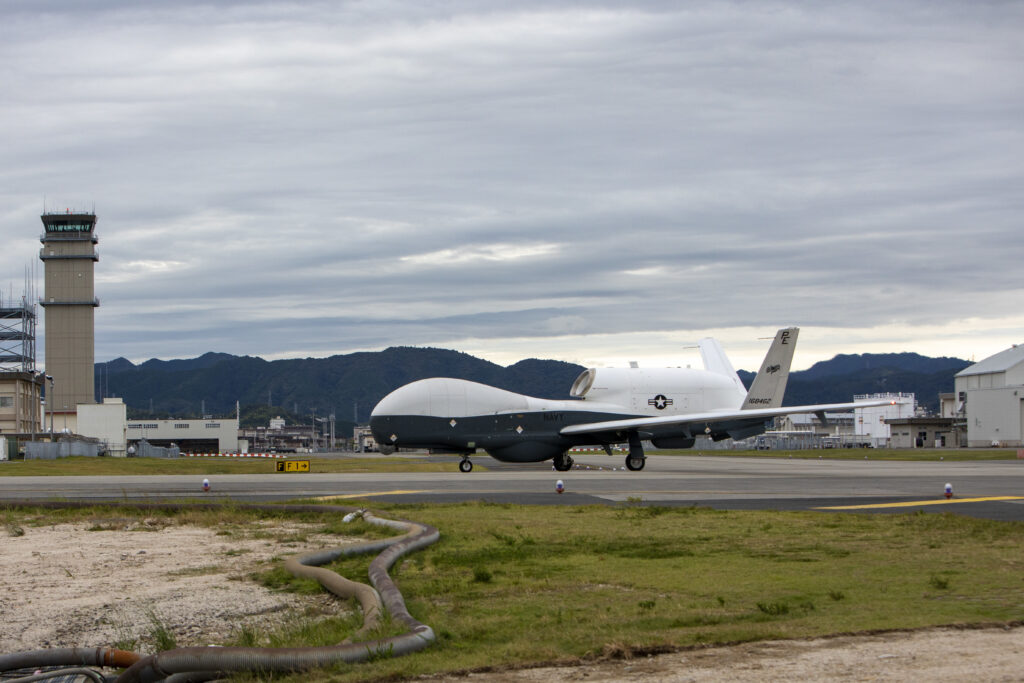
ARLINGTON, Va. — The commander of the Navy’s largest forward-deployed numbered fleet said the MQ-4C Triton high-altitude, long-endurance unmanned aerial vehicle currently deployed in the Western Pacific is proving to be a benefitting to his fleet’s operations.
“Any sensor is goodness in my fleet,” said Vice Adm. Karl Thomas, commander, U.S. 7th Fleet, speaking Oct. 14 at the U.S. Naval Institute in Annapolis, Maryland, in a Maritime Security Dialogue, a series conducted by the U.S. Naval Institute and the Center for Strategic and International Studies and sponsored by HII. “It’s a huge AOR [area of responsibility] and to have something that has that kind of legs [range] and that persistence really helps.”
“We’ve obviously been operating in theater with Triton for quite some time,” Thomas said. “We’re getting close to the IOC [Initial Operational Capability] level with Triton.
“We’re going to use Triton as a replacement for some of our surveillance aircraft,” he said. “So, the biggest benefit it brings clearly is its tremendous endurance. We’ve operated it out of Guam routinely. We’ve started to operate it out of various places in Japan, trying to not only make sure we have numerous places to take-off and land.”
The admiral said the fleet is working to build up an orbit “to learn our way through some of the capabilities that an EP-3 [Aries II Orion electronic reconnaissance aircraft] might bring back. It will be a different way of processing the information than we do with our EP-3s, so we’re working as a Navy to see how we seamlessly transition.”
- Navy’s Triton UAV to Provide Targeting for LRASM - May 2, 2024
- BlueHalo to Test C-UAS System on Marine Corps JLTV - April 29, 2024
- USS George Washington Deploys to U.S. Southern Command, Eventually Headed to Japan - April 26, 2024



